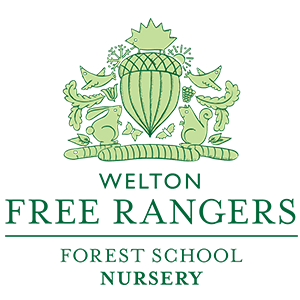I have recently become a new and obsessive customer of Pinterest. Pinterest is a visual discovery tool that people use to collect ideas for their different projects and interests. People create and share collections (called “boards”) of visual bookmarks (called “Pins”) that they use to do things like plan trips and projects, organize events or save articles and recipes. You can download the app on to your smart phones or visit the website using your computer/laptop. Whilst I was browsing on Pinterest I came across "My five senses" sensorial education. This grabbed my attention straight away. I looked into it some more and thought to myself I need to carry out a similar activity in the Burrow.
We support our children in developing their knowledge, skills and understanding that helps them to make sense of the big wide world around them. One aspect in Knowledge and Understanding of the World in the Early Years Foundation Stage is "Exploration and Investigation". This is about how children investigate objects and the materials around them and also learning about similarities and differences.
At circle time we often talk about our senses and body parts, asking the children to point out where, for example, their noses are and ask them what we use our noses for.
I thought I could "borrow" the "My five senses" activity to support the Burrow in their learning of understanding the World. So bright and early on a Monday morning I prepared everything ready to carry the activity out. I drew 5 large circles on some paper and in every circle I drew the different sense, eye, nose, mouth, ears and a hand. Now I had to think of what objects to use for what sense!
So I came up with:
Touch - A soft teddy
Sight - Egg timer
Hear - Shaker
Smell - Jelly cubes
Taste - Rice biscuits
I took a group of five children in to another room where I had set up the activity. We began to speak about our senses, for example I asked “What do we use to see things?” MW replied “Our eyes”. This encouraged me to further the conversation on, so I asked them all to shut their eyes. I asked “What do you see now when your eyes are shut?” LTB replies with “nothing” and MW answers with “It’s just black”. So when they opened their eyes I asked them “what do you see now?” and MW replied with “I see everyone now”.
Now our little trial run of our senses, I explained to the group about the piece of paper in front of them. Explaining there are five different circles and on each one I drew a different sense, for example, ear, eye, hand.
I asked the group to hold out their hands in front of them and shut their eyes. I went around the group and rubbed the soft teddy bear over their hands. When I finished I asked them to open their eyes, I asked “What did you feel?” The group curiously at the five different objects in front of them, before long they all agreed that it was the teddy bear! We spoke about what circle on the piece of paper we should put the teddy bear on and they confidently decided the hands!
We went through tasting rice biscuits, watching the egg timer, listening to a musical instrument and smelly jelly cubes!
Young children are stimulated by sensory experiences, from birth children have learned so much about the world by touching, tasting, smelling, seeing and hearing. Sensory play also contributes in crucial ways to brain development. Our five senses explain to ourselves and children what is going on around us and it helps up decide whether we enjoy or not the experience going on around us. As we talk with them about what they are observing and sensing, we give them new language tools to connect with these more familiar sensory tools, building language as well as supporting cognitive concepts specific to the experience.
In the Burrow we often play a game called “Noisy Neighbour” where one adult is hidden somewhere out of sight and the children are sat on the carpet all pretending to be asleep. The adult leading the game will say “Early one morning when all the children are sleeping, suddenly there was a noise from next door!” The adult out of sight will make a noise, this gives us as practitioners a great opportunity to use many different sounds where we can broaden children’s knowledge and understanding but also the sounds that they know and are confident with. For example the adult can be an aeroplane or an animal, even make crying, coughing, sneezing noises! After the hidden adult makes the noise a couple of times, the leading adult will say “Wake up boys and girls what was that sound?!” and then the children will guess what noise it was.
It’s almost like a scientific process, when children are exploring they start to develop questions, which lead them to investigate by using their senses, so touching, smelling, licking/tasting etc, they are using their senses to collect lots of information and data and therefore they can begin to answer their own questions, whether we know it or not!
Nicola
